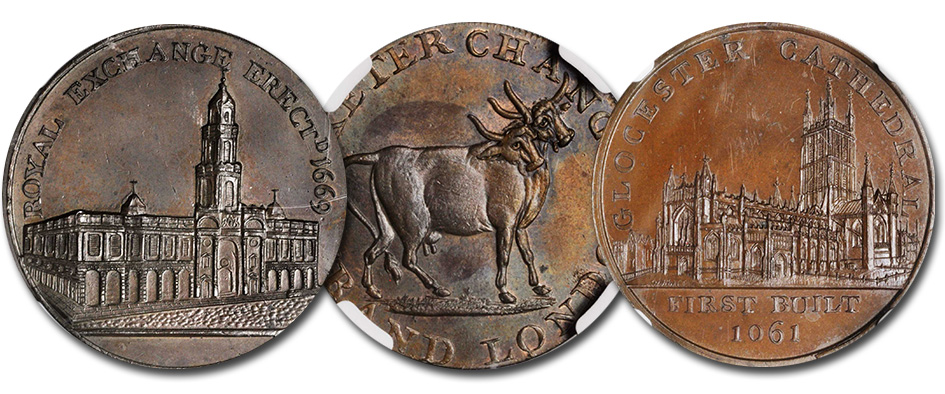
The second half of the 18th century saw a sharp decline in the output of non-gold coinage by the Royal Mint in London, a situation that was exacerbated by the population boom and the move of many workers from rural farms to urban factories. With this influx of a new and growing workforce, employers had few options for paying employees, as there was a severe shortage of small change. Even worse, much of what was in circulation was counterfeit, accepted as payment simply because there was no other tangible solution.
In 1787, however, commerce would introduce an answer, with Thomas Williams overseeing the minting of copper halfpenny tokens as a means to compensate workers and facilitate trade locally on the Isle of Anglesey just off the coast of Wales. Within months, the effectiveness of privately issued token coinage was widely realized, as business leaders saw the benefits of solving a problem that the mint clearly was not. The next decade would see countless businesses commissioning and issuing their own token coinage, mostly in denominations of farthing, halfpenny, and penny that were vital to their working class employees.
These trade tokens featured seemingly endless design motifs meant, in some cases, to advertise a business or celebrate the locality for which the token was produced. So vast was the output that contemporary coin collectors became interested, attempting to track down every single variety or having their own produced for use as “trade bait” with fellow collectors. One such aspiring numismatist, James Conder, indexed the array of tokens he encountered, providing an early reference for other collectors and lending his name to the loose overall series of these trade tokens, now commonly referred to as ‘Conder tokens.’
Our October Collectors Choice Online (CCO) auction will feature an attractive group of these trade tokens, the majority of which are in choice and gem grades and offer rich red-brown brilliance. Of note for the collector of architectural types is a run of issues struck for London and Gloucester by Peter Kempson, a button maker turned token manufacturer. The London series of penny tokens displays famous buildings in that city, such as the Bank of England, Middlesex Hospital, and the Royal Exchange, while the Gloucester series features structures such as Gloucester Cathedral, St. John’s Church, and White Friars. Also popular with collectors—both in the time of James Conder and today—are those with animal motifs, such as James Pidcock’s series. One of his more famous types, displaying a toucan and a two-headed cow, is also represented in this collection, along with numerous other fauna-inspired motifs.
To view these tokens along with the rest of our October Collectors Choice Online (CCO) auction—slated to be available online in late September—please visit StacksBowers.com, where you may register and participate in this sale.
We are always seeking coins, medals, and pieces of paper money for our future sales, and will still be accepting consignments for the October Collectors Choice Online (CCO) auction until 13 September. Our next sale following that will be our Official Auction of the N.Y.I.N.C. in January 2020. If you would like to learn more about consigning, whether a singular item or an entire collection, please contact one of our consignment directors today and we will assist you in achieving the best possible return on your material.





